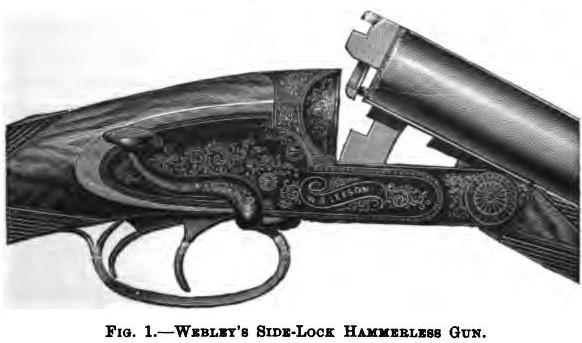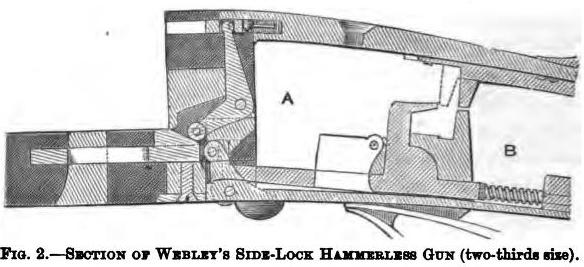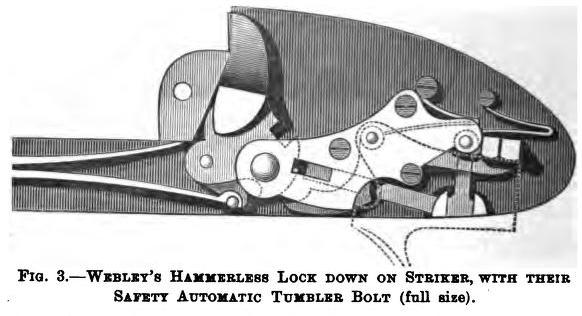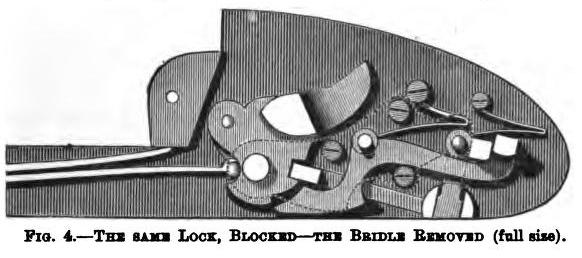|
|
|
|
Design - Page 4 This page has been extracted from Pages 224g though 224i of John Henry Walsh's "The Modern Sportsman's Gun and Rifle V1 : Game and Wildfowl Guns (1882)" and reviews aspects of shotgun design adopted by W. R. Leeson based upon patents held by P Webley & Son and illustrates another variation of the "third bite" bolting system. This section follows on from a brief discussion between John Walsh and W. R. Leeson concerning a Live Pigeon gun, covered on Design page 2, hence the initial reference to "the last described gun......."., again I can make no apologies for the Victorian style of English used by the author !!
While exhibiting the last described gun, Mr. Leeson also showed me a modification of his “Invicta" gun, recently patented by the same firm of P. Webley and Son. It combines the side or under lever variety of the Gibbs and Pitt action with one of the No.7 form of the Webley system of treble bolts, and their new patent tumbler blocking safety-bolt.
This gun is cocked by the Purdey bolt of the Gibbs and Pitt plan in the same manner as several hammerless top-lever guns now before the public, such as Mr. Leeson's “Invicta” and others: but the connection of a top bolt with the Purdey bolt without a top lever is a novelty, and the carrying out of the plan was more than usually difficult from the fact that the under and top bolts are required to travel together only a sufficient distance to release the barrels. The under bolt then, while the barrels are falling, and assisted by the fall, continues its travel to cock the tumblers. The top bolt remaining stationary. This difficulty has been overcome by the introduction of the bell crank lever (Fig. 2 A), shown in section.
The short end of this lever is raised by the action of all inclined plane on the Purdey bolt, which ceases to travel as soon as it reaches the top of the incline. When the gun is closed the spring (B) on the trigger plate drives the lever and under bolt home, leaving the top bolt to be driven home by the small independent spiral spring behind it. This gun is fitted with a new lock and safety blocking tumbler bolt, which is shown as in Fig. 3, after the trigger has been legitimately pulled.
This, acting upon both sears, has withdrawn the safety bolt from a slot in tumbler and the sear nose from the bent. The tumbler has consequently fallen on the striker. In Fig. 4 it is supposed that the tumbler has been only withdrawn, to represent a jar out of bent from any accidental cause, when (the trigger not having been pulled) the bolt is in its slot, and prevents the tumbler from falling on the striker.
In addition, there is also the usual trigger bolt and slide, as shown in Fig. 2.
|



